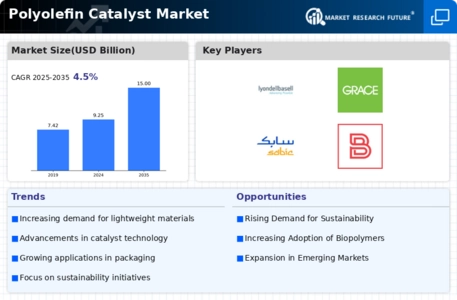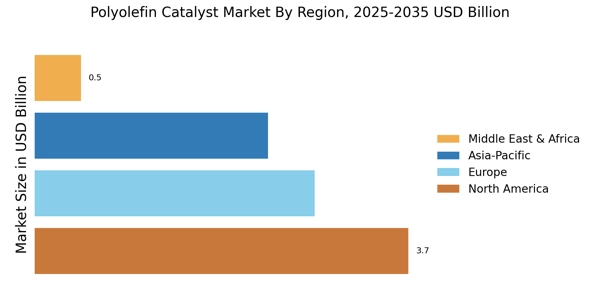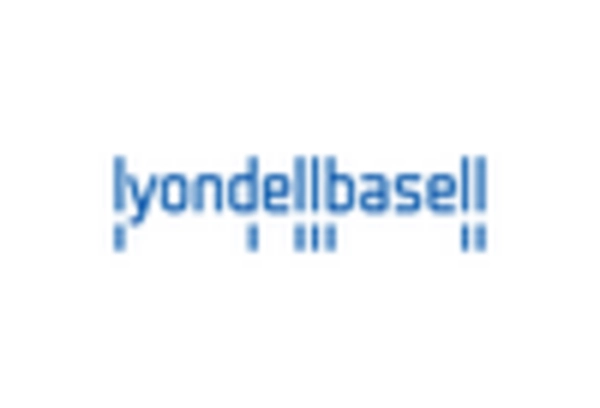Expansion of End-Use Industries
The expansion of end-use industries such as packaging, automotive, and textiles is driving the growth of the Polyolefin Catalyst Market. As these sectors evolve, they increasingly require high-performance polyolefins that can meet stringent quality and performance standards. For instance, the packaging industry alone is projected to grow at a rate of 4% annually, necessitating advanced catalysts for the production of lightweight and durable materials. This trend is likely to create new opportunities for catalyst manufacturers, as they strive to develop solutions that cater to the specific needs of these expanding industries. Consequently, the Polyolefin Catalyst Market is poised for substantial growth in response to these developments.
Advancements in Catalyst Technologies
Technological advancements in catalyst development are significantly influencing the Polyolefin Catalyst Market. Innovations such as metallocene catalysts and Ziegler-Natta catalysts have revolutionized the production of polyolefins, allowing for greater control over polymer properties. These advancements enable manufacturers to produce tailored polyolefins that meet specific application needs, enhancing product performance. The market for metallocene catalysts alone is projected to grow at a rate of 6% annually, driven by their superior efficiency and versatility. As these technologies continue to evolve, they are expected to play a crucial role in shaping the future landscape of the Polyolefin Catalyst Market.
Rising Demand for Polyolefin Products
The increasing demand for polyolefin products across various industries is a primary driver for the Polyolefin Catalyst Market. As sectors such as packaging, automotive, and construction expand, the need for high-performance polyolefins rises. In 2023, the demand for polyolefin products was estimated to reach approximately 100 million tons, reflecting a compound annual growth rate of around 5% over the next few years. This growth is likely to stimulate the demand for advanced catalysts that enhance the efficiency and quality of polyolefin production. Consequently, manufacturers are investing in innovative catalyst technologies to meet the evolving requirements of the market, thereby propelling the Polyolefin Catalyst Market forward.
Regulatory Support for Sustainable Practices
Regulatory frameworks promoting sustainable practices are emerging as a significant driver for the Polyolefin Catalyst Market. Governments are increasingly implementing policies aimed at reducing plastic waste and encouraging the use of recyclable materials. This shift is prompting manufacturers to adopt catalysts that facilitate the production of biodegradable and recyclable polyolefins. In 2023, it was reported that around 30% of polyolefin production was directed towards sustainable applications, a figure that is anticipated to rise as regulations tighten. The alignment of catalyst technologies with sustainability goals is likely to enhance the competitiveness of the Polyolefin Catalyst Market in the coming years.
Growing Investment in Research and Development
Investment in research and development (R&D) within the chemical industry is a crucial driver for the Polyolefin Catalyst Market. Companies are increasingly allocating resources to develop innovative catalyst solutions that improve production efficiency and reduce environmental impact. In 2023, R&D spending in the chemical sector was estimated at over 10 billion USD, with a significant portion directed towards catalyst technology. This focus on innovation is expected to yield breakthroughs that enhance the performance of polyolefin catalysts, thereby expanding their application range. As a result, the Polyolefin Catalyst Market is likely to benefit from enhanced product offerings and improved market competitiveness.


















Leave a Comment